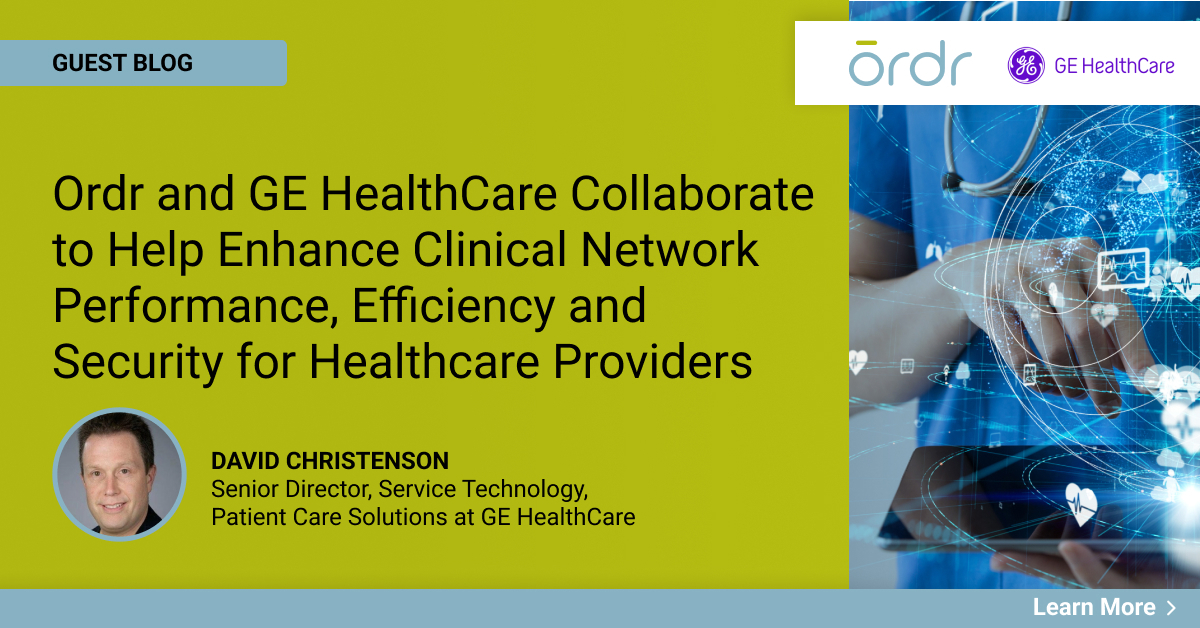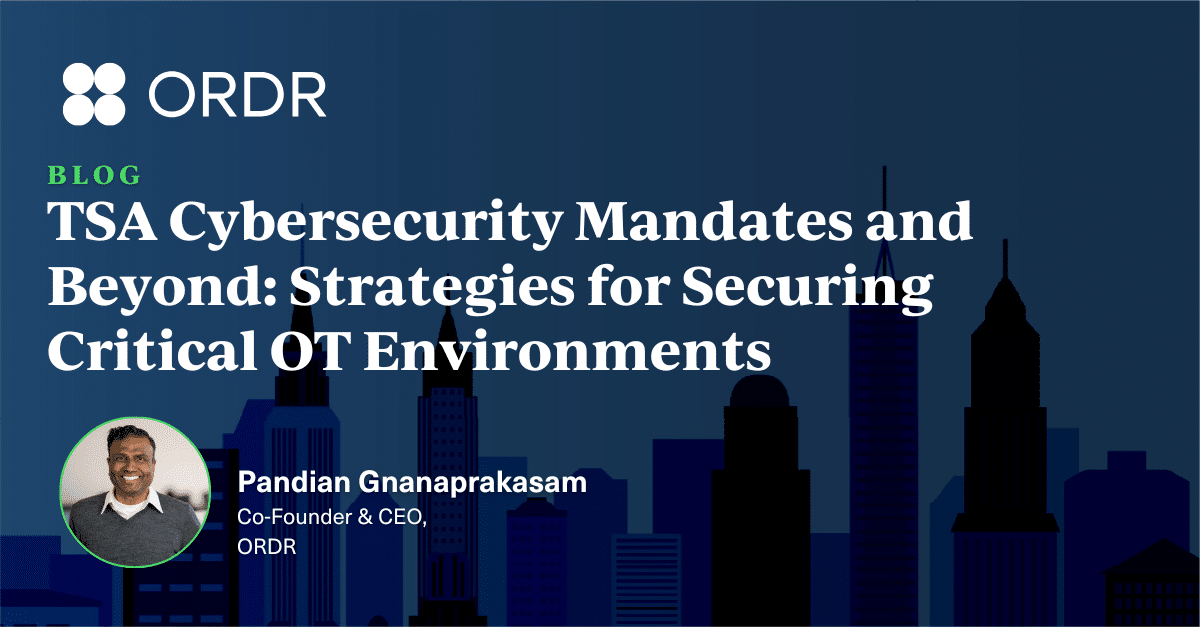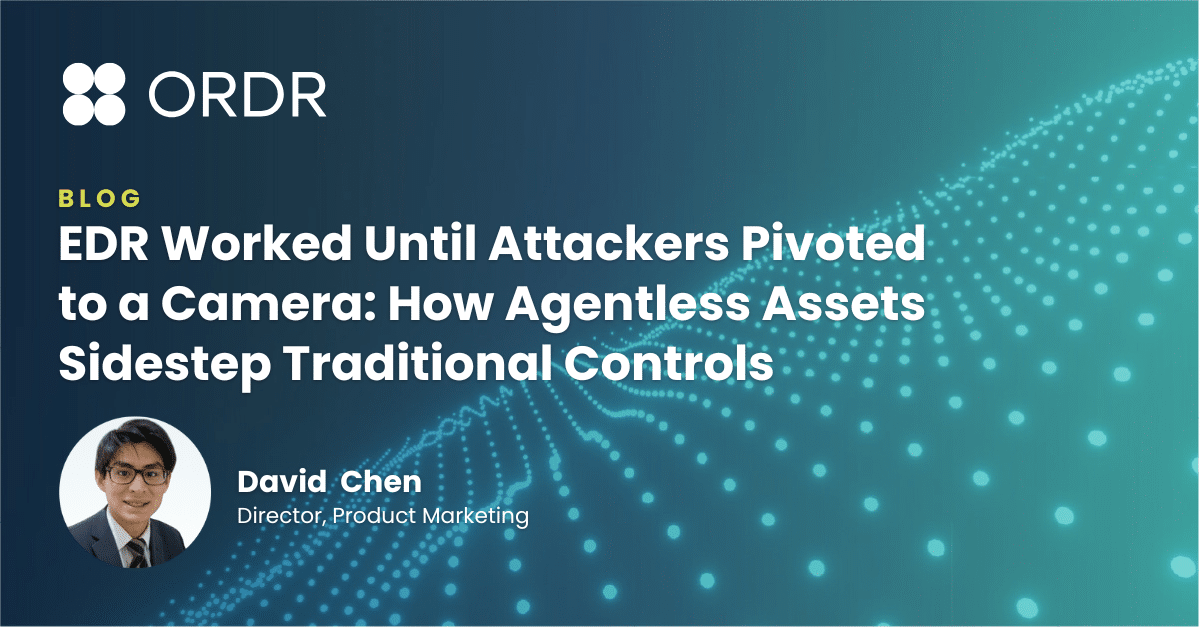The past two years have been extremely challenging for healthcare providers. The pandemic thrust healthcare providers into an unprecedented period of transformation. It increased the importance of asset management as medical devices were mobilized and rapidly deployed to deal with the surge of patients. This was followed by the hybrid workforce trend and telemedicine adoption that extended the caregiving environment (and devices) beyond traditional hospital walls. At the same time, cyberattacks like ransomware increased in frequency and severity, reverting many hospitals to pen and paper and disrupting patient care.
The modern healthcare environment now must support the proliferation of connected medical devices that are critical to patient care and operations. Healthcare providers monitor these devices continuously and keep them functioning efficiently but must also protect them against cyberattacks.
Addressing Healthcare Provider Challenges
When Ordr and GE HealthCare first began collaborating, we spoke to several Biomedical & Healthcare Technology Management (HTM) and Security teams about the top challenges they were facing.
From these conversations, we learned there is untapped potential in optimizing healthcare networks with real-time data to improve clinical productivity, enable equipment uptime, simplify troubleshooting, and maximize the utilization of clinical assets. With hospital funding challenges and workforce turnover, the more efficient biomedical and HTM teams can be, and the fewer manual processes they have, the happier they will be.
Here are some of the challenges Biomed and Clinical Engineering teams are facing and how we are helping them:
- Locating devices and understanding utilization: Biomedical engineering and HTM teams can spend more than an hour per person per shift locating devices and patient data modules in the hospital. Often, once they finally locate the devices, they discover that the devices are in use and cannot be serviced, patched or updated. Our new service offering helps eliminate this costly inefficiency, enabling biomed and HTM teams access to connectivity (physical or network) and near real-time utilization details for every device. They can locate specific devices for maintenance or troubleshooting, including GE HealthCare patient data modules and the bedside monitors to which they are connected.
- Visibility into devices and flows: Manual processes to discover and manage device fleets can be inefficient. With this service, biomed and HTM teams will benefit from automated discovery and classification of devices, visibility into device flows and connectivity, and near real-time and accurate device data that can integrate into their existing CMMS. This reduces the need for biomed and HTM teams to perform labor-intensive and error-prone tasks of walking around hospitals trying to identify devices, their serial number and where they are connected to. Behavior anomaly alerting on traffic flows can help identify compliance issues such as medical devices moving to the guest VLAN.
- Monitoring and troubleshooting Intermittent outages: Biomed and HTM teams may not be aware of devices impacted by communications or performance issues until it’s too late. When medical devices are impacted by downtime, clinical workflows suffer. Essentially, clinicians’ ability to provide quality care is compromised If they are unable to use these devices or access the information they need to do their jobs and treat their patients. As part of the Ordr and GE HealthCare’s service offering, we have developed new application and network monitoring functionality for the CARESCAPE network. Healthcare systems can proactively identify issues before they impact clinical care. An early “diagnosis” of potential issues, along with granular insights for troubleshooting, can eliminate major failures, decrease downtime, and lower service costs.
- Vulnerability management: When new vulnerabilities are published by manufacturers or software providers, it can take a great deal of time for healthcare providers to determine which of their devices are impacted, slowing their response time. Lack of accurate device data (OS, software version, etc.) can make it difficult to assess risk and identify devices with vulnerabilities. Our service offering enables hospital security and biomed/HTM teams to identify and focus on specific vulnerabilities affecting clinical assets under their management, prioritize vulnerabilities with Clinical Risk Scores, and self-manage the remediation process with simplified workflows and custom tags.
Why Ordr and GE HealthCare Collaboration
“Empowering Biomedical Technicians, Clinical Engineers, and Hospital IT with easy-to-use tools aimed at improving self-managed network security, productivity, and equipment uptime is key to enhancing critical patient care.” said Alla K. Woodson, GE Healthcare’s Global GM, Patient Care Solutions – Services & Consumables. “This network performance and security solution brings together the technology and scale of our two organizations to help ensure that our customers have visibility and access to actionable insights.”
“Hospitals and healthcare facilities rely on GE Healthcare’s CARESCAPE networks to host critical patient care devices, it is of the utmost importance that these networks – and everything connected to them – remain secure and operating at peak efficiency,” added Jim Hyman, CEO of Ordr. “The deep integration of the Ordr platform with the GE Healthcare CARESCAPE network will help give healthcare organizations comprehensive clinical asset visibility, security and performance capabilities they need to optimize and protect their environment of care.”
GE HealthCare’s Service Offering for CARESCAPE patient monitoring networks that harnesses the power of Ordr platform, will be available early this year. For more details on the offering, contact info@ordr.net.

Interested in
Learning More?
Subscribe today to stay informed and get
regular updates from ORDR Cloud




